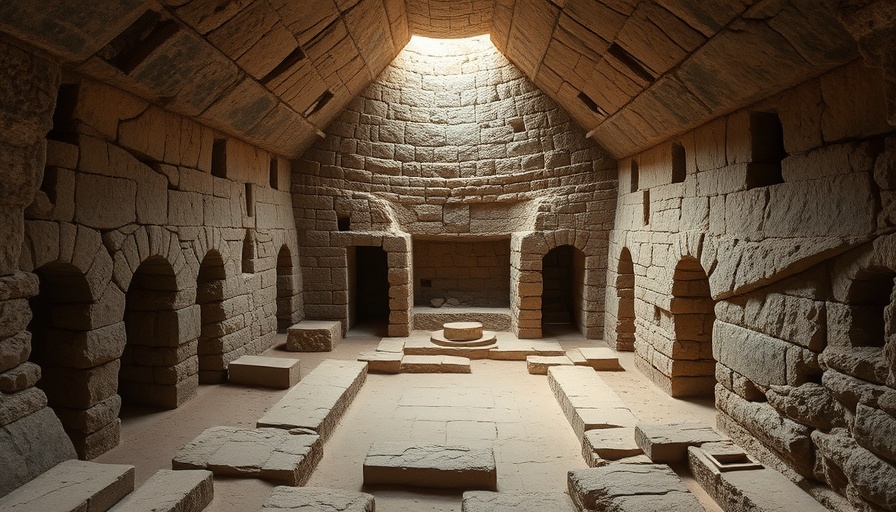
Unearthing the Past: The Baptistery's Discovery
In a remarkable archeological find, a fifth-century baptistery located near an ancient cathedral in France has unveiled profound insights into early Christian rituals. The discovery not only illuminates the ceremonial practices of early Christians but also enriches our understanding of the historical context in which these rituals were performed. With increasing interest in early Christianity and its impact on modern religious practices, this find has implications far beyond the realm of archeology.
The Significance of Baptism in Early Christianity
Baptism has long been a cornerstone of Christian faith, signifying purification and admission into the community of believers. This ancient baptistery, used for rituals in the early days of Christianity, provides an essential glimpse into how these practices were conducted. Researchers note that the baptistery’s design—featuring a large immersion pool—suggests that full immersion was the intended method of baptism during this period, highlighting the ceremonial importance assigned to the act.
A Broader Historical Context
The discovery of this structure aligns with other recent archeological findings in Europe, which indicate a period of significant growth for Christianity in the fifth century. Such insights suggest that the fledgling Christian community was establishing its traditions and rituals against a rich tapestry of cultural change, influenced by both Roman and pre-Christian practices. As scholars piece together the narratives of the past, the baptismal site becomes a vital artifact for understanding the formation of early Christian identity.
The Modern Implications of Ancient Rituals
Today, understanding early Christian rituals can help contemporary believers reflect on the significance of these practices in their lives. The exploration of how these rituals were performed in historical contexts can inspire modern adaptations that resonate with current spiritual and communal needs. By learning from the past, religious communities can foster a deeper connection to their heritage, encouraging broader discussions around faith and tradition.
Future Trends in Archeological Research
As technology advances, methods for exploring and excavating historical sites continue to evolve. Techniques such as 3D imaging and ground-penetrating radar are becoming crucial in modern archaeology, allowing researchers to uncover hidden structures without disturbing existing sites. This empowers scholars to study sites like the newly discovered baptistery while preserving their integrity for future generations, ensuring we can continue to learn from our past.
Cultural Significance and Common Misconceptions
As we delve into the cultural artifacts of ancient civilizations, it’s essential to address common misconceptions surrounding these discoveries. Many individuals believe that archaeological finds are purely academic pursuits; however, they significantly contribute to the broader public understanding of cultural and religious history. Artifacts like the baptistery bridge gaps between past and present, fostering conversations about belief systems, identity, and community.
What This Means for Contemporary Society
The unveiling of this ancient baptistery not only highlights the rituals of early Christianity but also provides a platform for dialogue around modern beliefs. As we navigate rapidly changing social dynamics, reflecting on historical expressions of faith can foster understanding and unity in an increasingly polarized world. Crossing the lines of faith, community, and culture, the findings from this archeological site encourage the exploration of our collective history.
In conclusion, the uncovering of this ancient baptistery serves as a reminder of the rich tapestry of belief, tradition, and community that has shaped our current religious practices. It invites further exploration and understanding of Christian history, encouraging the integration of these ancient practices into contemporary spiritual journeys.
 Add Element
Add Element  Add Row
Add Row 



Write A Comment